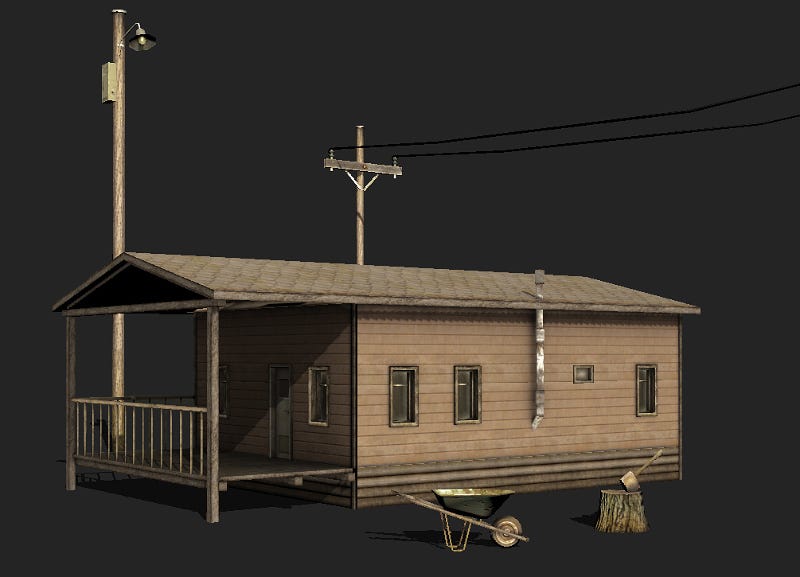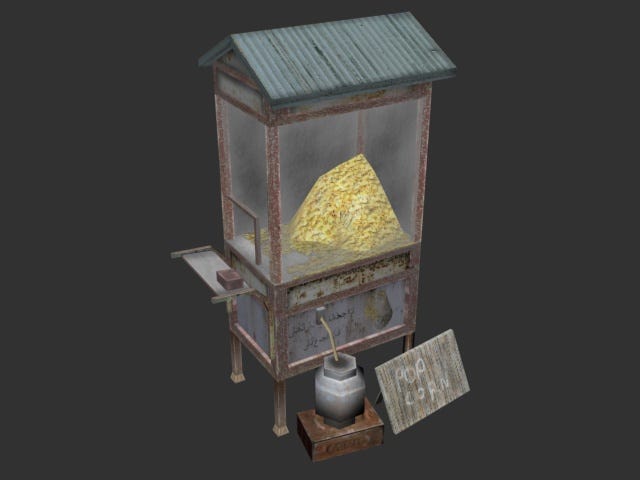Welcome to this humble online place of learning!
Greetings dear internet traveler!
If you ended up here it probably means that you are interested in environment art, game art, games industry career development, or just for a passion for making cool stuff on the computer.
Today we live in a blessed age of digital abundance. We have free access to valuable information at the tip of our fingertips, which when used wisely and patiently, allows us to shape our lives in any way we sit fit.
I know this because I started from zero and now I have the tools to build my life the way that I want, enjoying pleasure and abundance from my labor, and happiness at home.
And with this humble blog, I intend to bring information to help you on your journey too, the same way that countless people helped on mine.
The challenge these days is not finding information, but making sense of it, and using it in a logical and optimal way. That’s the contribution that I hope to make to your life.
My intention is that the content on this website will allow you to also live a better life, through the power of 3D environment art.
First of all, what is the power of environment art?
Plain and simple, the power of environment art is to create virtual spaces that transport users to constructed realities/worlds, where they can have experiences that transcend their physical/material reality.
As an environment artist, you have the power to create such experiences for others to enjoy. You have the power to create your own worlds, explore your own ideas, and bring something new into existence.
By using tools such as game engines, 3d modeling packages, texturing programs, sound design suites, etc… we can design illusions that other people will inhabit momentarily.
How do you achieve immersion?
One must carefully use different techniques and tools to create an illusion that feels natural, looks believable (no matter how fantastical/stylized), and is easy to use/navigate. Immersion comes from a phenomenon called suspension of disbelief, which only happens when the artist/designer is successful in “tricking” the user’s brain into believing what he/she is experiencing is real.
On an environment art level, things such as stretched textures, illogical lighting, bad composition, and many other pitfalls contribute to pulling us out of the experience.
On a product level, there are many other irritants, such as intrusive UI, unnecessary clutter, convoluted game mechanics, etc…
When everything comes together in a harmonious way, a game/vr/3d space becomes something else. Using it feels like looking through a portal into another dimension.
I’m sure you can name many games/movies/books, no matter how fantastical they are, that pulled you in in the way I’m describing.
This sense of immersion comes from carefully using different techniques to facilitate the users’ brain to stop questioning the experience, and just take in what comes.
In the end, it’s all smoke and mirrors.
That’s why I’m personally skeptical that using straight-up real-life scans without any thought will give this sense of immersion. Just because something is “photorealistic”, it doesn’t mean that it’s believable or immersive. In fact, the uncanny valley effect has a very detrimental effect on immersion.
Who are you, how do you know these things and what are some of your works?
I was born in Brazil in 1987, a country with no traditional games industry until very recently. Since a young kid, I was fascinated by videogames and the power to be transported to other worlds. They lit a fire in my imagination and showed me a passion for creating my own worlds.
I was raised in a middle-class family in a country of extreme social inequality. I didn’t have my own computer until I was 15 years old (and it was a very outdated one, that could barely hold a few mp3 files on a 400mb hard drive 🤣), and that’s when my journey as an environment artist began.
After I managed to upgrade my computer, I was finally able to get the game that was the rage at the time, Counter-Strike, a game actually made by community members for free, just for the pleasure of making games.
The temporary social transformation that Counter-Strike brought to Brazil can only be known by the ones that experienced it. Suddenly, everyone wanted to play that game, but not a lot of people had their own computers (especially one capable of running the game AND a stable internet connection), so “Lan Houses” proliferated across the country.
It was a mini-revolution. Any town you went to, no matter how small, had a Lan House where dedicated players were having a ton of fun on Counter-Strike. Not only the game was free to play without any microtransactions whatsoever, but it also had very imaginative content that was created by people from all over the world.
A lot of people started their own businesses, running these Lan Houses, and were able to improve their condition and take control of their own lives, at least for a brief moment in time.
Most popular in every Lan House was the map cs_rio, which took place in a favela in Rio de Janeiro. It was an incredible feeling to finally play a game that took place in the country we lived in, and this one map created so many shockwaves that it was even featured on the national news in prime time.
At that time, I decided that I wanted to learn how to make my own games, but I didn’t know how. That is, until one day when I was playing a map called de_sampa (by the same creator of cs_rio, Roger “Mataleone” Sodré), and the thought occurred to me: “Someone made this… and they probably live in Brazil! If someone else was able to make this, I can also learn and make my own”. I then found a banner on the map which had the author’s website. I still remember that moment and that day, because a light ignited in my mind. It was a fork in the road, where my life completely changed. Or rather, the moment when I found my direction in life. My life mission.
To my surprise (and luck!), on his website, Mataleone was generous enough to have created a free book on how to get started making Counter-Strike maps. Everything you needed to know to install the map editor and be able to create a simple room with an open sky.

From that moment on, an obsession began. I started making maps during most of my awake time, getting immersed for hours in the map editor with good music. I discovered online communities filled with like-minded people. I pushed myself to get better and better. I knew the other alternative in life, was to have a job that I probably wouldn’t enjoy as much as this.
Working on mods sometimes was tough, because my PC was very underpowered. When Half-Life 2 came out (the first game I ever bought with my own money), my PC wasn’t able to run it. I was able to use Hammer, but not play the maps. It was challenging to say the least, but that didn’t deter me :)
There was a funny story that happened at this time. My nice friends and coworkers at a mod called Insurgency got together and shipped me a graphics card so I could be able to play my maps. Unfortunately, Brazil being Brazil, it got stuck in customs, where they wanted to charge me an exorbitant price in import fees, an amount that I simply didn’t have at the time so the card was shipped back to Switzerland or Austria.

Anyway, after years of believing in the dream, working hard and for free and making myself a name in the community, I got my first break in the industry, as an outsource 3d artist for Southlogic Studios, the premier game company in Brazil (at the time).
I had cold emailed them a year before with my portfolio at the time, and they told me that they were not hiring but thanked me for the application. But then, they got a new project, and Fernando D’Andrea (now a legend and one of the most veteran devs in the Brazilian games industry!) remembered my application and they contacted me.
They asked me if I knew how to model, UV, and bake normal maps and generally make “next-gen” assets. I said that I did to get the job, but in reality, I could barely rotate the viewport in 3ds max at the time 🤣
But I worked hard and everything worked out in the end. That job was a huge learning lesson, and I have to thank Fernando for the opportunity and patience in giving me detailed feedback on how to improve my models.

In the end, I was pretty happy with the results, and now I had real professional experience! It was also the first time I ever made any income from 3D Art and used the proceeds to upgrade my computer and buy a Wacom Tablet.
(to be continued…)
If any of this resonated with you, welcome!
It’s great to have you here, and I’m looking forward to seeing your creations and sharing some of the things that I learned with you!
Feel free to explore the content and interact with the blog. I’m slowly building the content here, and my intention is that, with time, this will become a very valuable resource to anyone out there on the same journey as I am!
If you are looking for premium environment art tutorials, check out my Gumroad, where you can find my online courses. You can check out my art and other tutorials on my website.
I can also be found on the usual suspects, Artstation, Twitter, Youtube, and LinkedIn.
Cheers!
Thiago






